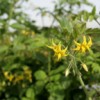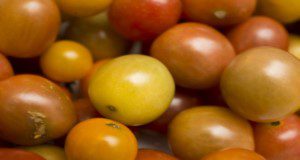Herbicide resistance was historically not a significant issue in most horticultural crops because few herbicides were applied. Close proximity of agronomic crops and the loss of methyl bromide has led to a gradual increase in herbicide inputs and the increased occurrence of herbicide-resistant weeds in tomato fields. Very few herbicides are registered for tomato, and resistance is a major concern. This new 11-page publication of the UF/IFAS Horticultural Sciences Department provides a definition of herbicide resistance, explains how it develops, and provides management recommendations for tomato growers. It was written for growers and Extension agents, but the information may be of interest to anyone concerned about herbicide resistance in vegetable and small fruit crops. Written by Shaun M. Sharpe, Nathan S. Boyd, Ramdas G. Kanissery, and Peter J. Dittmar.
https://edis.ifas.ufl.edu/hs1398
Tag: Tomato Pest Management
Managing Diamide Resistance in Florida Tomato (ENY867/IN978)
 As with any insecticide, repeated use of diamide insecticides on successive generations of the same pest may lead to the development of insecticide resistance. In order to avoid the development of resistance to diamides by targeted pests of tomato, group 28 insecticides, including diamides, must be rotated with insecticides possessing different modes of action. This 3-page fact sheet was written by Hugh A. Smith, and published by the UF Department of Entomology and Nematology, February 2013.
As with any insecticide, repeated use of diamide insecticides on successive generations of the same pest may lead to the development of insecticide resistance. In order to avoid the development of resistance to diamides by targeted pests of tomato, group 28 insecticides, including diamides, must be rotated with insecticides possessing different modes of action. This 3-page fact sheet was written by Hugh A. Smith, and published by the UF Department of Entomology and Nematology, February 2013.
http://edis.ifas.ufl.edu/in978
Managing Thrips and Tospoviruses in Tomato (ENY859/IN895)
 Several invasive species of thrips have established in Florida and are causing serious economic losses to vegetable, ornamental, and agronomic crops. Damage to crops results from thrips feeding and egg-laying injury, by the thrips vectoring of plant diseases, the cost of using control tactics, and the loss of pesticides due to resistance. This 12-page fact sheet describes the biology and ecology of thrips and tomato spotted wilt virus, and recommends a management program. Written by Joe Funderburk, Stuart Reitz, Steve Olson, Phil Stansly, Hugh Smith, Gene McAvoy, Ozan Demirozer, Crystal Snodgrass, Mathews Paret, and Norm Leppla, and published by the UF Department of Entomology and Nematology, August 2011.
Several invasive species of thrips have established in Florida and are causing serious economic losses to vegetable, ornamental, and agronomic crops. Damage to crops results from thrips feeding and egg-laying injury, by the thrips vectoring of plant diseases, the cost of using control tactics, and the loss of pesticides due to resistance. This 12-page fact sheet describes the biology and ecology of thrips and tomato spotted wilt virus, and recommends a management program. Written by Joe Funderburk, Stuart Reitz, Steve Olson, Phil Stansly, Hugh Smith, Gene McAvoy, Ozan Demirozer, Crystal Snodgrass, Mathews Paret, and Norm Leppla, and published by the UF Department of Entomology and Nematology, August 2011.
http://edis.ifas.ufl.edu/in895
